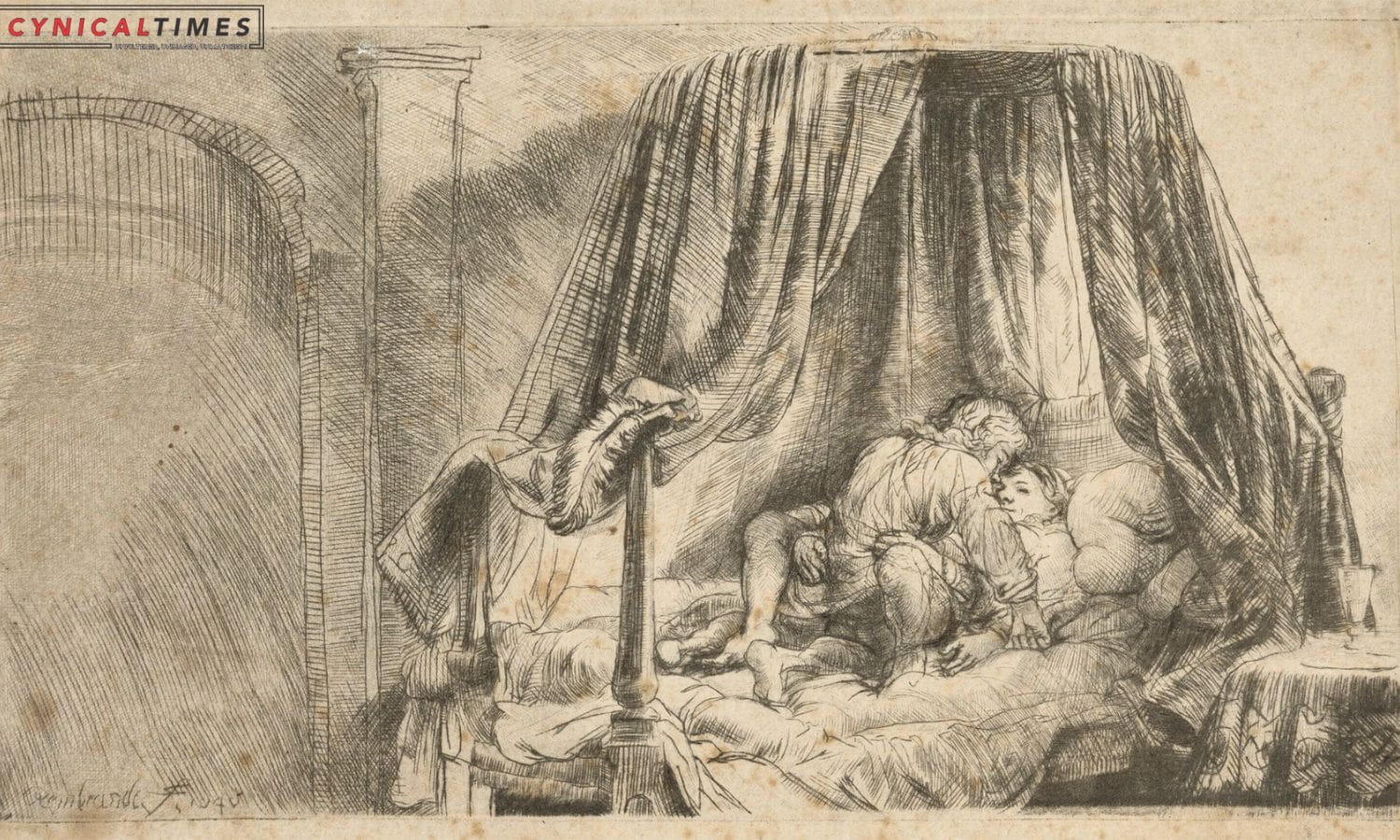Rembrandt Risque Renaissance: In a surprising development within the art world, the renowned international auction house Christie’s has introduced a content warning for an explicit etching by Rembrandt, titled “The French Bed,” created in 1646. This artwork, part of the “Old Masters I” collection, is set to be auctioned at Christie’s London branch, with an estimated value of up to half a million dollars. However, potential viewers must navigate a digital content warning before accessing the image, marked with “EXPLICIT CONTENT. This lot contains explicit material and mature subject matter.”
The etching portrays a couple engaged in an amorous encounter on a four-poster bed, and while semi-clothed, the depiction is considered explicit enough to warrant a cautionary notice. The artwork includes intriguing elements, such as a half-empty wineglass on a bedside table and a seemingly tossed feathered hat belonging to the male figure.
Christie’s has labeled this etching as one of Rembrandt’s rarest and explicitly erotic prints, acknowledging its unique place within the artist’s extensive body of work. Despite its potentially provocative nature, an accompanying essay on Christie’s website describes the piece as “charming and light-hearted,” emphasizing its artistic value beyond any perceived explicitness.
The decision to restrict public viewing and introduce a content warning for an artwork of historical significance raises questions about the intersection of art, censorship, and public perception. As art enthusiasts and potential buyers navigate this new approach to displaying artwork, it remains to be seen how this explicit content warning may impact the bidding dynamics and the broader discourse on the portrayal of art in contemporary society.
Also Read: Dain Yoon Mastering Surreal Realities in the Art of Self-Portraiture
Our Reader’s Queries
Why did Rembrandt paint himself so much?
Rembrandt honed his artistic skills by practicing portrait painting, which required mastering the art of capturing human beings in various poses, expressions, and roles. To save costs, he opted to use himself as a model for these studies, resulting in a collection of self-portraits that were in high demand.
Why did Rembrandt lose his fortune?
Rembrandt’s collecting habit proved to be his downfall, not just due to the sheer quantity and cost of his purchases, but also because he persisted in buying art despite being burdened with massive debts. This ultimately led to the deterioration of his personal relationships, causing him to miss out on opportunities that could have saved him from bankruptcy.
What was unique about Rembrandt?
Renowned for his exceptional ability to capture the essence of human emotion and expression, Rembrandt van Rijn (1606-69) is widely regarded as one of the most talented storytellers in the world of art. His masterful depictions of individuals in a range of different moods and personas have earned him a place among the greatest artists of all time. With a unique talent for bringing his subjects to life on canvas, Rembrandt’s work continues to captivate and inspire audiences around the globe.

